Combustion
Combustion is a necessary phenomenon for power generation in many engineering applications. The study of flame and turbulence interactions is required for designing combustors for power generation and high speed flow applications. This has led to important studies that try to explore effects of physical phenomenon such as turbulence and shocks on flame behavior. These studies are needed for avoiding catastrophic failures during design stages as well as performance, efficiency and power improvements.
Flame-Turbulence Interaction
The images below show the transformation of a homogenous isotropic turbulence field on the left to a velocity field on the right, after a flame is introduced and allowed to evolve for eddy turnover times. The homogenous isotropic turbulence field has velocity with a zero mean.
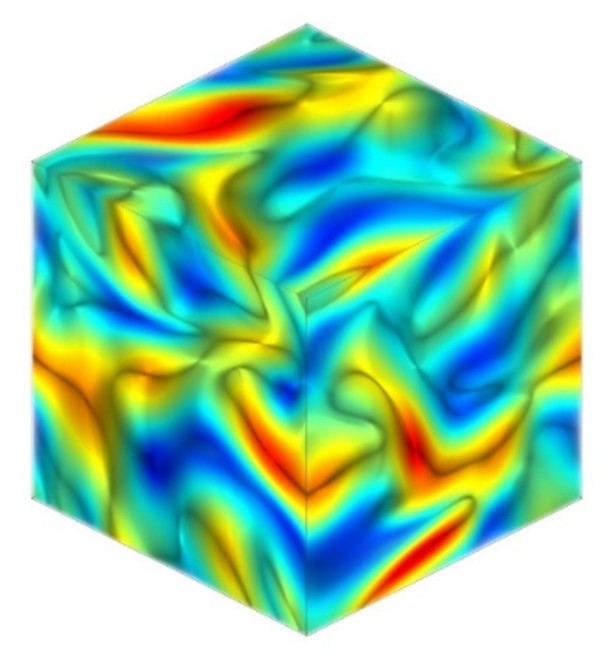
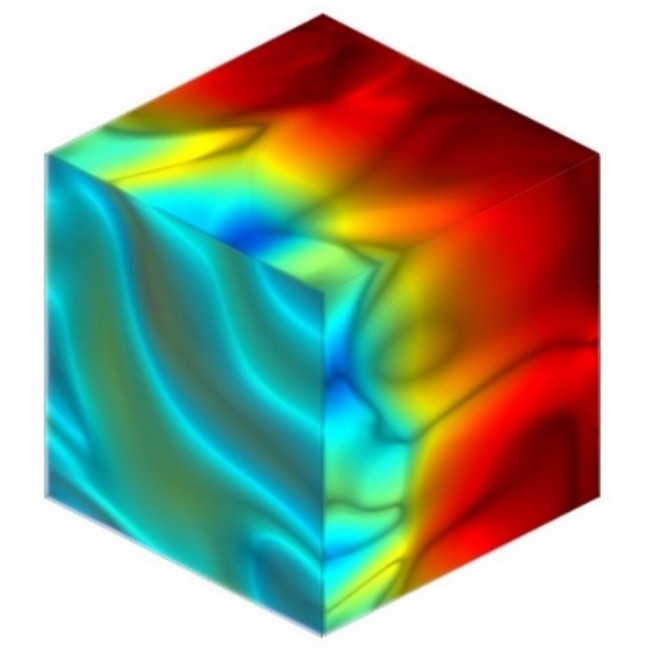
Homogenous isotropic turbulence field, before and after flame introduction.
Temperature Iso-Surfaces
The temperature contour after the eddy turnover time is shown here - the temperature ranges from 800 K to ~2200 K after flame introduction.
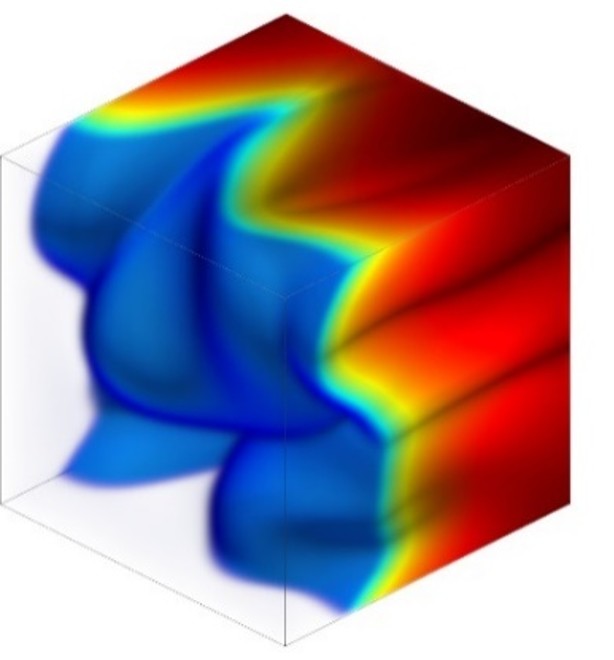
Temperature contour of the flowfield after flame introduction.
Turbulent Kinetic Energy & Flame Thickening
The evolution of turbulence kinetic energy (TKE) is shown below at various eddy turnover times. As expected, the spectrum sees an increase at higher wave numbers as compared to the isotropic turbulence case. Detailed description of TKE evolution, flame thickening and other behavior can be found in the publication below.
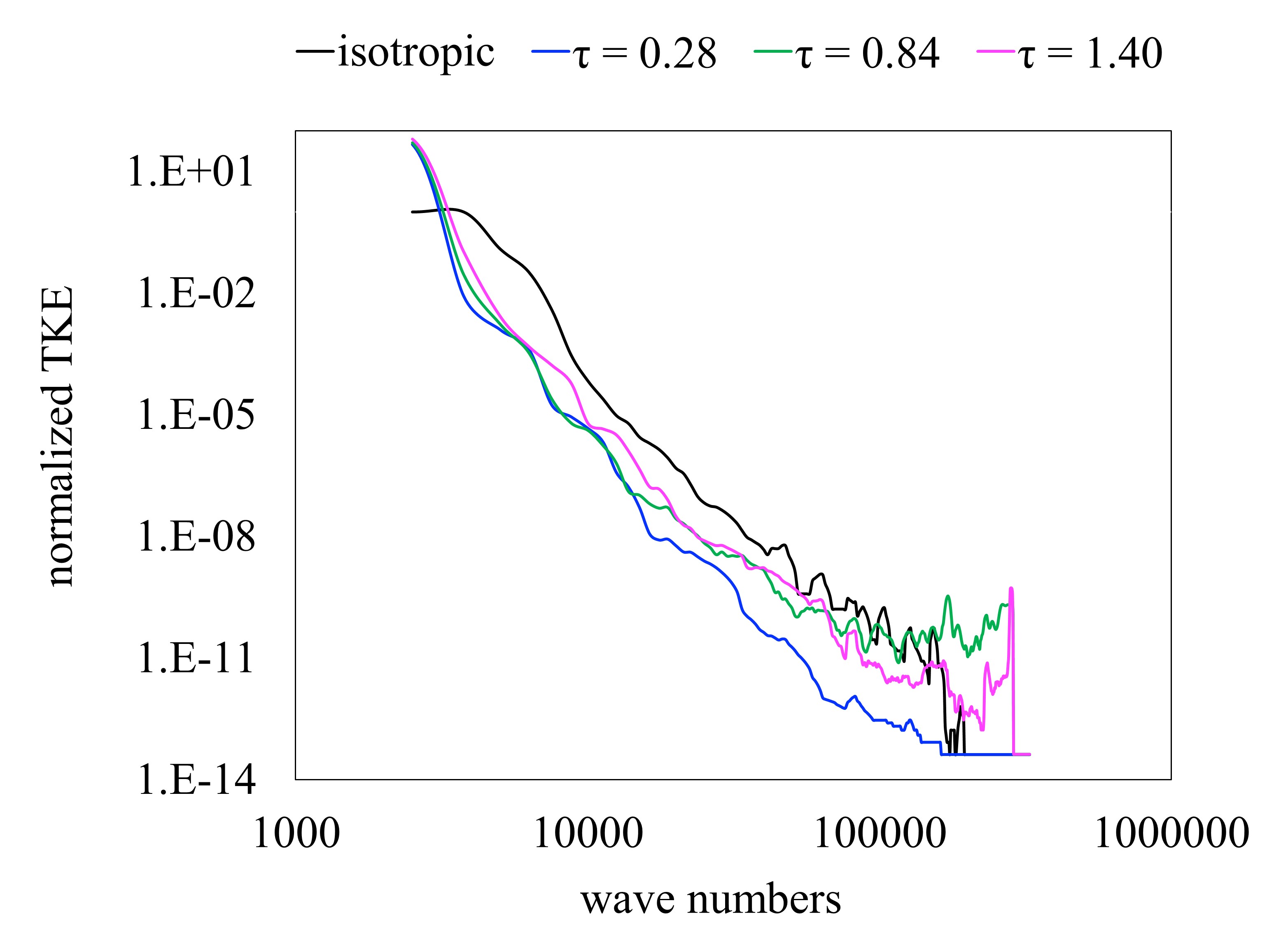
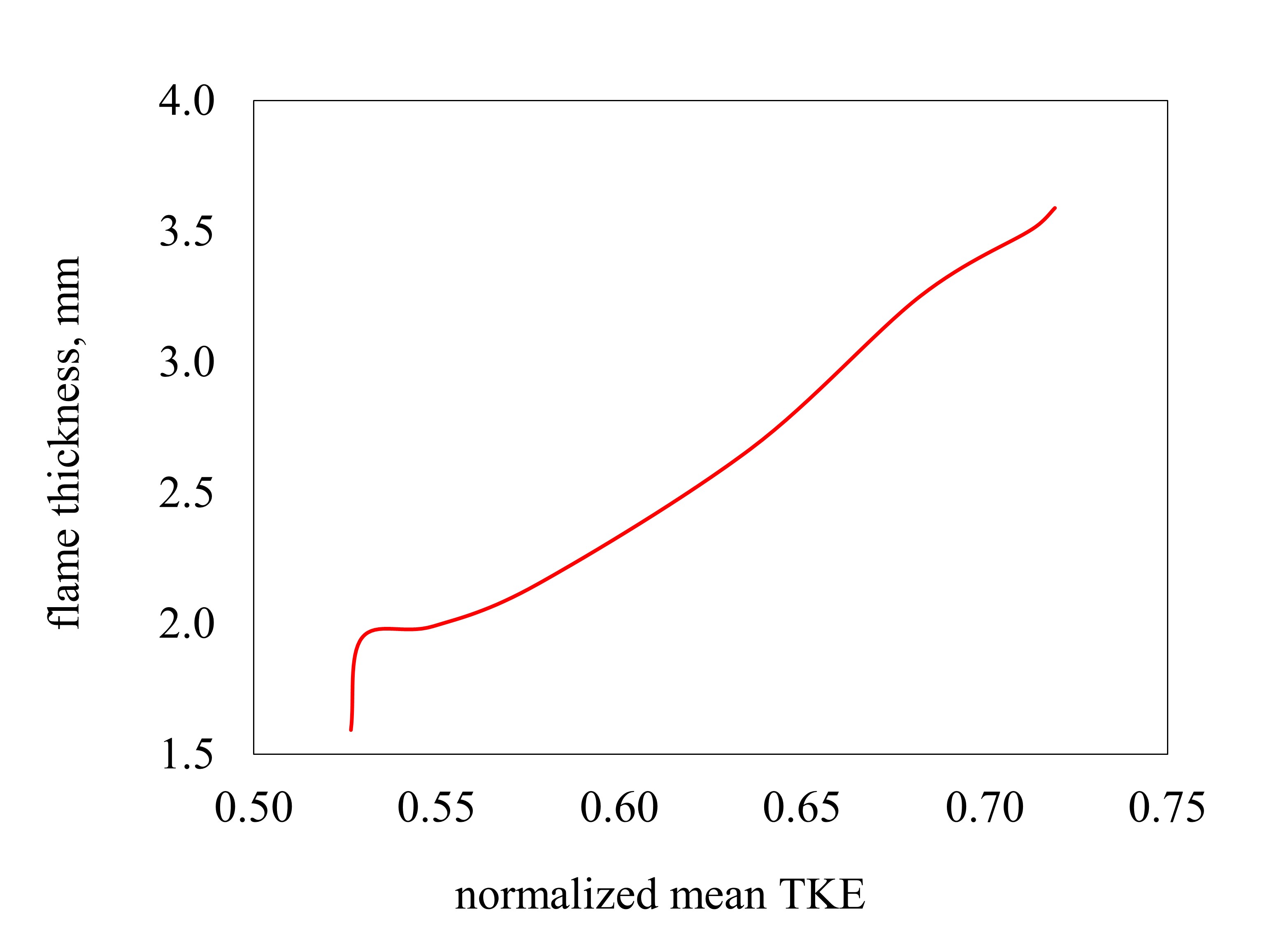
Evolution of the turbulent-kinetic-energy (TKE) spectrum and its influence on flame thickening.
Relevant Publications
- H. Ganti, P. Khare, and L. Bravo, “Direct Numerical Simulation of Premixed Syngas-Air Mixtures with High Hydrogen Content”, Physics of Fluids Special Edition – Hydrogen Flame and Detonation Physics, July, 2023. doi: https://doi.org/10.1063/5.0156537.